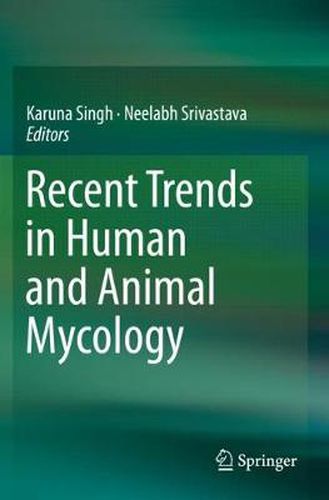Readings Newsletter
Become a Readings Member to make your shopping experience even easier.
Sign in or sign up for free!
You’re not far away from qualifying for FREE standard shipping within Australia
You’ve qualified for FREE standard shipping within Australia
The cart is loading…






This title is printed to order. This book may have been self-published. If so, we cannot guarantee the quality of the content. In the main most books will have gone through the editing process however some may not. We therefore suggest that you be aware of this before ordering this book. If in doubt check either the author or publisher’s details as we are unable to accept any returns unless they are faulty. Please contact us if you have any questions.
Fungal pathogens pose an on-going and serious threat for poikilotherms and homeotherms, and can cause a broad spectrum of diseases ranging from innocuous to life-threatening. In addition, long-term exposure to some mycotoxigenic moulds can lead to mycotoxicoses in human and animals. Given the expanding population of immune compromised hosts, the list of fungal opportunists grows longer every year. Moreover, antifungal resistance, drug-related toxicity and our limited arsenal of antifungals have exacerbated the situation. To address these problems, strategies such as the identification of novel targets, use of the structure-activity relationship in rational drug design, development of new formulations, modification of existing antifungals to combat resistance, and bioavailability enhancement are called for.
For the reader’s convenience, this book has been divided into three sections. The first six chapters of Section I provide a timely review of mycoses, from endemic to cosmopolitan and from generalized to specific, while both chapters of Section II focus on risks associated with mycotoxins. In closing, the two chapters of Section III describe potential antifungal leads and drug candidates based on phytochemicals and coumarin scaffold.
$9.00 standard shipping within Australia
FREE standard shipping within Australia for orders over $100.00
Express & International shipping calculated at checkout
This title is printed to order. This book may have been self-published. If so, we cannot guarantee the quality of the content. In the main most books will have gone through the editing process however some may not. We therefore suggest that you be aware of this before ordering this book. If in doubt check either the author or publisher’s details as we are unable to accept any returns unless they are faulty. Please contact us if you have any questions.
Fungal pathogens pose an on-going and serious threat for poikilotherms and homeotherms, and can cause a broad spectrum of diseases ranging from innocuous to life-threatening. In addition, long-term exposure to some mycotoxigenic moulds can lead to mycotoxicoses in human and animals. Given the expanding population of immune compromised hosts, the list of fungal opportunists grows longer every year. Moreover, antifungal resistance, drug-related toxicity and our limited arsenal of antifungals have exacerbated the situation. To address these problems, strategies such as the identification of novel targets, use of the structure-activity relationship in rational drug design, development of new formulations, modification of existing antifungals to combat resistance, and bioavailability enhancement are called for.
For the reader’s convenience, this book has been divided into three sections. The first six chapters of Section I provide a timely review of mycoses, from endemic to cosmopolitan and from generalized to specific, while both chapters of Section II focus on risks associated with mycotoxins. In closing, the two chapters of Section III describe potential antifungal leads and drug candidates based on phytochemicals and coumarin scaffold.